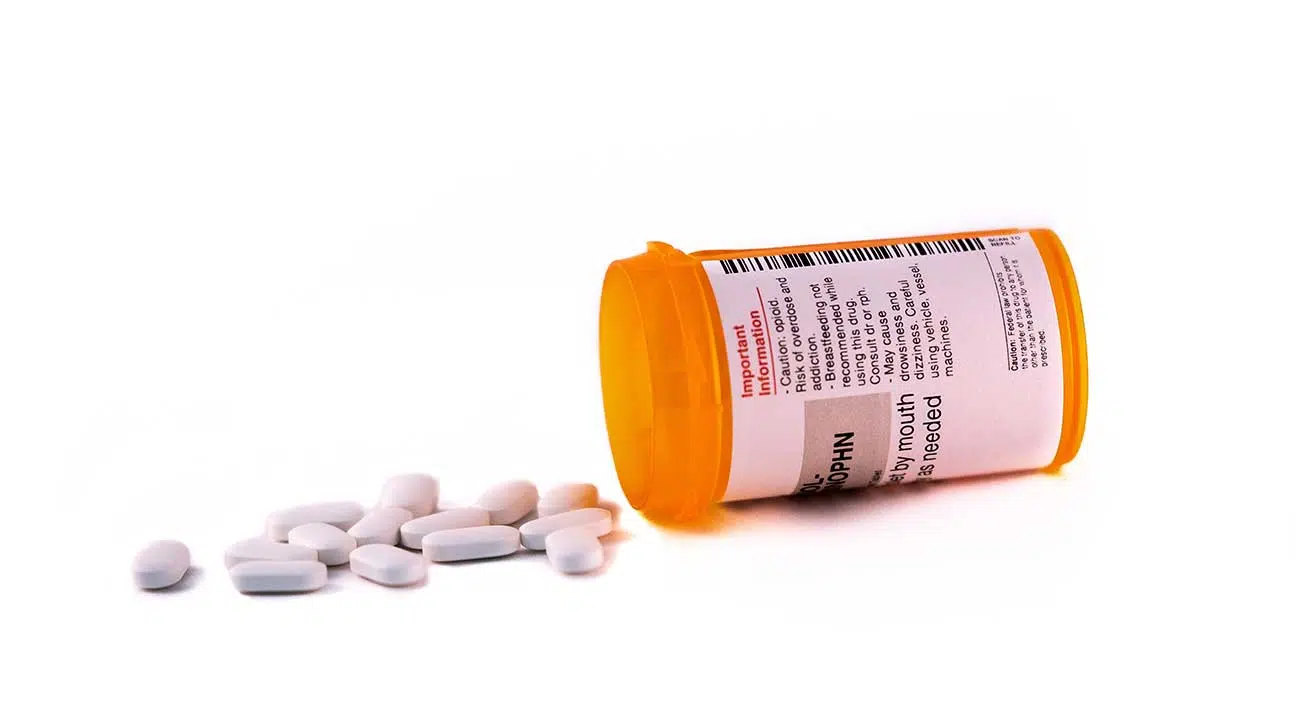
Tramadol is a prescription drug often known by the brand name Ultram.
It has a relatively low risk of tolerance and addiction in the general population.
If you are more susceptible to opioid tolerance or have a history of substance abuse, you are at greater risk.
How Tramadol Tolerance Develops
When tramadol tolerance does develop, it is usually a result of misuse.
You can generally avoid tolerance if you take the exact amount prescribed using the time intervals and methods selected by your doctor.
You may be more at risk if you have severe pain or a co-occurring disorder.
Chronic Pain Treatment
The treatment of chronic pain usually requires long-term pain relief. Depending on the nature of your condition, an opiate painkiller may be necessary.
Unfortunately, the prolonged exposure will increase your risk of building tolerance. If your normal dosage ever loses efficacy, talk to your doctor.
Depression
Depression is a mental illness as serious as any physical ailment. In addition, depression is a risk for addiction.
The use of tramadol causes a short-lived feeling of euphoria by blocking the reuptake of the neurotransmitters dopamine and serotonin, artificially increasing their concentrations.
Tramadol is not an antidepressant, but it can mask the symptoms of depression.
As a result, it isn’t uncommon for people with depression to self-medicate with prescription opioid drugs.
Opioid Addiction
A current or past opioid addiction is the most serious risk factor for tramadol tolerance.
Tramadol has similar pharmacology to codeine, oxycodone, and fentanyl. The intensity of the high among these drugs varies, but the general interaction is very similar.
Exposure to a dose of tramadol could trigger an addiction response if you have a past or current opioid addiction.
You should inform your doctor of any history of drug use when they are prescribing your pain medication.
How Long Can You Take Tramadol Before Tolerance Forms?
Tramadol does not usually build a tolerance when it is used as prescribed.
With that said, tolerance does occasionally affect people who are following their prescription to the letter. It’s a pretty rare occurrence, but it can happen.
In order to identify and address tolerance before it escalates to addiction, it is vital that you pay attention to your physical response to your medication.
If your pain management becomes less effective or you’re tempted to take higher doses, talk to your doctor.
Does Snorting Crushed Tramadol Lead To Tolerance Faster?
You should never snort crushed tramadol. Snorting tramadol will cause the high to hit you faster, and it will increase the risk of tolerance and addiction.
Tramadol should always be taken according to the instructions provided by your healthcare team. If you are ever tempted to take tramadol another way, talk to your doctor.
Potential Effects Of Tramadol Tolerance
Tramadol tolerance starts slowly. You may not even notice it right away, but you will eventually start to feel the effects.
Physical dependence, withdrawal symptoms, and other side effects of tolerance are hard to ignore.
Physical Dependence
Tramadol works by binding with your opioid receptors.
It’s an inhibitor, so it blocks pain signals to your central nervous system and stimulates the production of “feel good” hormones like serotonin and dopamine.
In the short term, these changes can be a gift, but that can quickly change.
If you are misusing or abusing opioids, your brain will slowly begin to anticipate the effects associated with the drugs.
Your brain will alter the way it behaves and produces certain neurotransmitters to balance out the effects of the tramadol.
It’s your brain’s attempt to maintain homeostasis, but it also means you have developed tramadol dependence.
Tramadol Withdrawal
Withdrawal occurs when someone who is dependent or addicted does not have enough of the drug in their system.
During this time, your body physically reacts to the abrupt change in what it considers “normal.”
During opioid withdrawal, you may experience:
- nervousness
- panic
- changes in blood pressure
- sweating
- insomnia
- respiratory symptoms
- chills
- nausea
- shaking
- cravings
- Serotonin Syndrome
When you use tramadol, it increases the levels of serotonin in your brain. If you are exposed to excessively high levels as a result of drug abuse, you may develop serotonin syndrome.
Serotonin syndrome is a potentially fatal drug reaction that should only occur if you are misusing your tramadol prescription.
If you ever experience confusion, loss of coordination, rigidity, high fevers, seizures, or loss of consciousness, you should seek immediate medical attention.
Constipation
All opioid analgesics slow the digestive system. If you are misusing narcotics like tramadol, you are likely to experience severe constipation.
Treatment Programs For Opioid Addiction
Building a tolerance to tramadol can contribute to the development of addiction, and tramadol addiction is a serious health issue. Fortunately, there are qualified treatment centers ready to help.
Opioid addiction treatment programs offer medically assisted detox. This form of detox uses medications like methadone to taper you off use of tramadol.
If your blood pressure is too high or low, you may be administered norepinephrine or hydrochloride. Other symptoms will be treated as needed.
Once you’ve cleared detox, you will have access to an array of therapy options in inpatient and outpatient settings.
Find An Opioid Treatment Center
If you or a loved one is facing an opioid addiction, now is the time to seek recovery.
You do not have to live in pain or in fear. Find an addiction recovery program today by calling our helpline.
Addiction Resource aims to provide only the most current, accurate information in regards to addiction and addiction treatment, which means we only reference the most credible sources available.
These include peer-reviewed journals, government entities and academic institutions, and leaders in addiction healthcare and advocacy. Learn more about how we safeguard our content by viewing our editorial policy.
- Centers for Disease Control and Prevention — Drug Overdose Deaths in the U.S. Top 100,000 Annually
https://www.cdc.gov/nchs/pressroom/nchs_press_releases/2021/20211117.htm - Mayo Clinic — Serotonin Syndrome
https://www.mayoclinic.org/diseases-conditions/serotonin-syndrome/symptoms-causes/syc-20354758 - U.S. National Library of Medicine: MedlinePlus — Tramadol
https://medlineplus.gov/druginfo/meds/a695011.html


